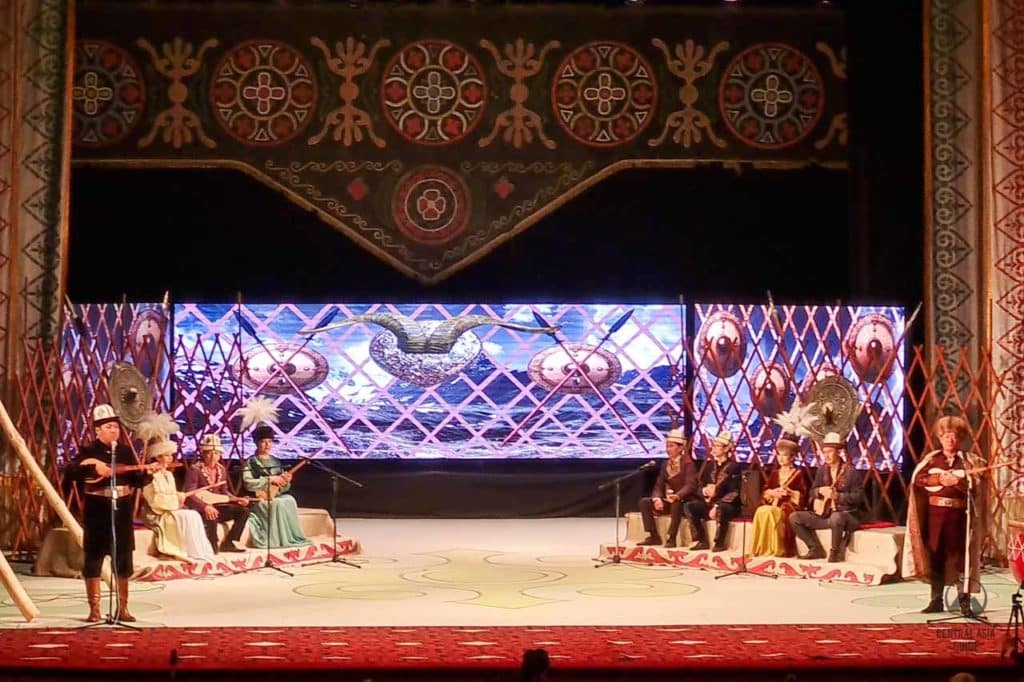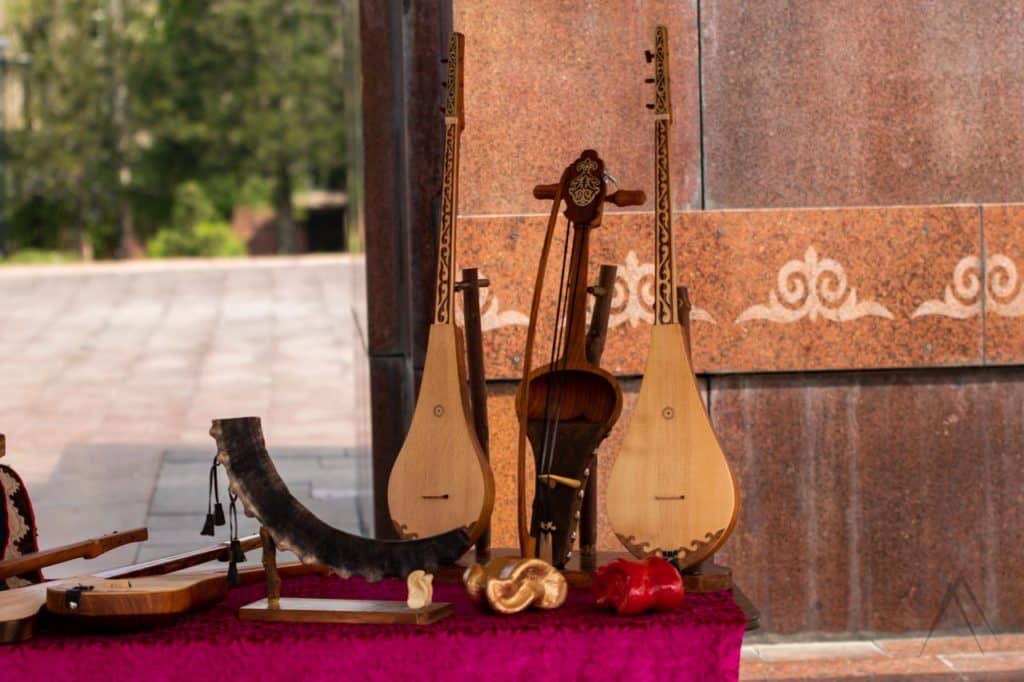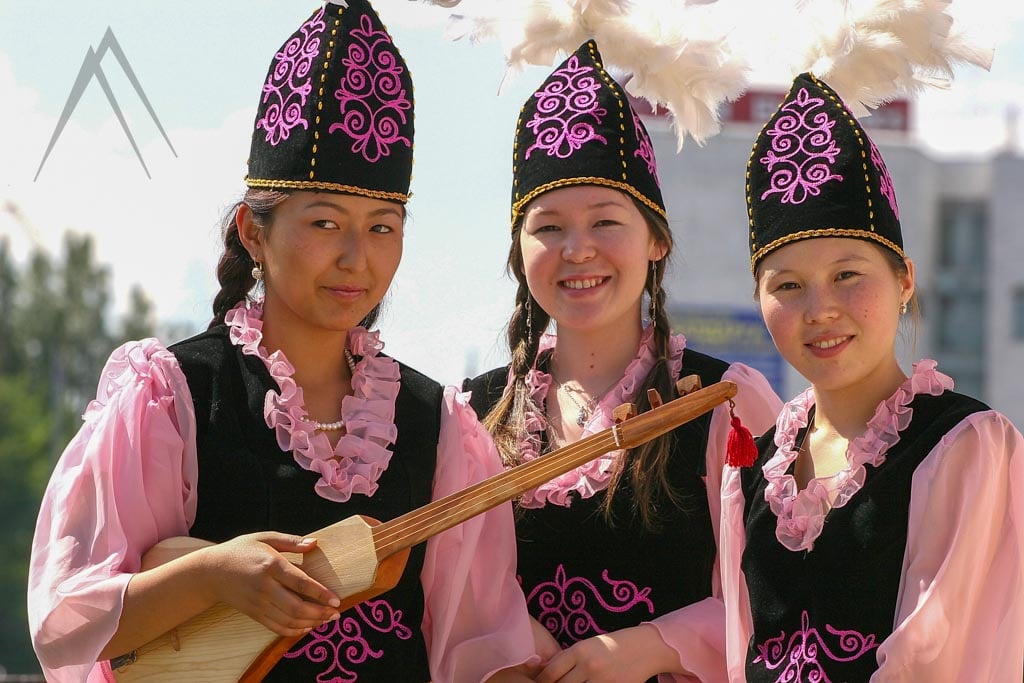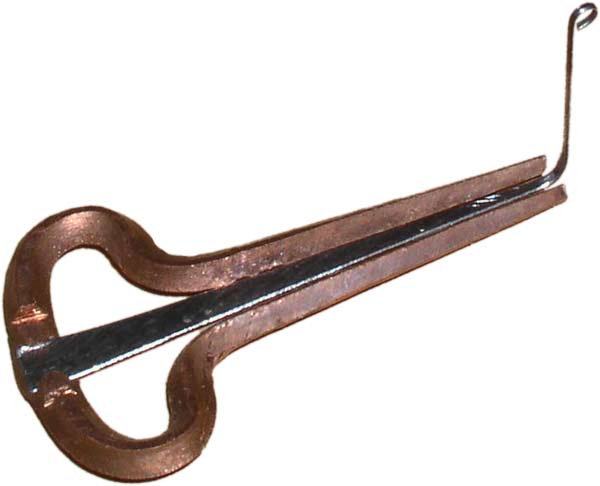Kyrgyz Music and instruments
Kyrgyz music
Kyrgyz folk music has its roots from the ancient times and it closly linked to Turkmen and Kazakh folk forms. Kyrgyz music is idicated the use of sustain and prolonged pitches.
Aitysh
Aitysh in Kyrgyz is same as Aaytys in Kazakh and means a song competition held between two akyns. And Akyns are improvisers and singers in Kyrgyz culture that have entertained people for tens of generations in Central Asia. There are also singers called manaschi that are similar to akyn but they perform mostly the stories from the Manas epoch. In Aytysh performance each akyn normally strums a national instrument komuz and they respond to each other in spontaneous rhyming verses on a wide range of topics.
They often make backhanded political statements, criticize each other’s style, flirt (if of the opposite sex), and flat-out insults on one another, but it is all done in good-humor. There are even competitions for akyns held in Kyrgyzstan to entertain the spectators. In 2018, the inscription called “Art of Akyns” was added to UNESCO’s intangible culture heritage list, together with “Kyrgyz epic tellers” in its title.


Kyrgyz musical instruments
Komuz
Komuz is an ancient Kyrgyz three-stringed instrument, resembling a small guitar. It is a significant part of any Kyrgyz folk music group. It consists of two main parts: the body and neck, along which the strings are stretched. The length of the instrument is approximately 90 cm and the width of the widest part is 19,5-22,5 cm.
The instrument is usually fully made from apricot or juniper. In ancient times, strings were made from the guts and veins of animals but now silk threads or synthetic materials are used.
The sound quality of the komuz depends on the strings and the type of tree from which it is made. A unique feature of the komuz is the capacity to tune the strings in a variety of ways to affect the tone of instrument.
The player is usually sitting and holding the komuz in a horizontal position and very rarely standing. The antique komuzs were smaller than the modern ones, as they needed to be transported by horse.
They also differed in the shape of the case and the komuz of the great akyn Toktogul Satylganov was in the form of a rhombus.


Temir ooz komuz
Temir ooz komuz is translated as “iron mouth komuz”, previously, only women played the instrument but later great male performers appeared as well. Temir Komuz is one of the oldest Kyrgyz plucked reed instruments and is a type of harp. It has a metal structure and it is 5-7 cm long in the form of a horseshoe with a width of 1,5 – 2 cm at the base with strongly elongated tapering to 5 – 7 mm ends.
The case is made of iron, copper, bronze, silver or gold. A steel plate fixed in the middle of the bow serves as a tongue. While playing the temir ooz komuz, the musician presses his cheeks to his teeth with his left hand, swings his tongue, pinching with the index finger of his right hand, while inhaling and exhaling air. By changing the shape of the mouth, the performer extracts various sounds of the overtone series.

Kyyak (Kyl kyyak)
Kyl-kyyak is a two-stringed bow instrument made of apricot or mulberry tree. The length is not more than 65 – 70 cm and the depth of the body cup is 3,5 – 5 cm, with a shape resembling an inverted pear cut in half. Its one half is covered with a deck, which is wrapped in camel skin.
At the bottom in the middle of the deck, a piece of thin skin is pulled – a kutkun (string holder), the edge of which is fixed at the end of the instrument. The kyl-kyyak is played by a musician called “kyyakchi” in a seated posture with the instrument held vertically, in the stretched hair on the bow is drawn gently across the strings.

More about Kyrgyz Culture
Page updated 25.4.2022